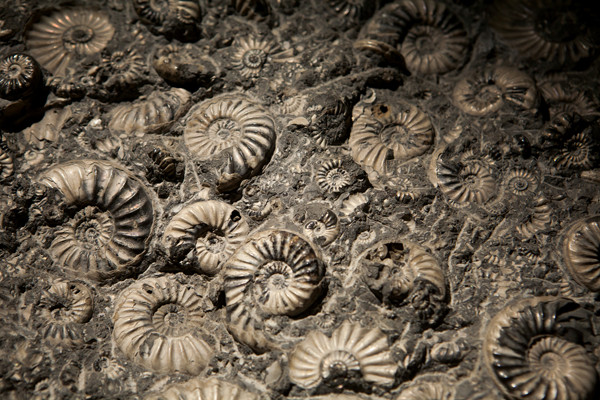
by Timothy Oleson Tuesday, November 4, 2014

Ammonites became extinct at the end of the Cretaceous. Credit: ©Shutterstock.com/alice-photo.
Why spiral-shelled, ocean-faring ammonites went extinct at the end of the Cretaceous while the nautilids — the ammonites’ less abundant and less diverse cephalopod relatives — survived has long puzzled paleontologists. Nautilids tended to dwell deeper in the ocean than ammonites, perhaps keeping them farther out of harm’s way after the asteroid struck, which likely led to acidification of the ocean surface. Now, a new study suggests that the animals’ geographic range may have contributed to which ones lived and which ones died.
Researchers led by paleontologist Neil Landman of the American Museum of Natural History in New York compiled fossil records of the 31 known ammonite genera living in the last half million years of the Cretaceous. Compared to Eutrephoceras, a nautilid genus that survived the extinction event, most of the ammonite genera lived within relatively small geographic areas, the team reported in Geology. In contrast, several ammonite genera found by other researchers to have briefly survived the end-Cretaceous had geographic ranges on par with Eutrephoceras.
The results don’t offer a specific extinction mechanism, but, the researchers wrote, the limited ranges of most ammonites may have left them more vulnerable to extinction. However, considering the more-traveled genera eventually died off not long into the Paleogene, the team noted that though “a broad geographic distribution may have initially protected some ammonites … it did not guarantee their long-term survival.”
© 2008-2021. All rights reserved. Any copying, redistribution or retransmission of any of the contents of this service without the expressed written permission of the American Geosciences Institute is expressly prohibited. Click here for all copyright requests.